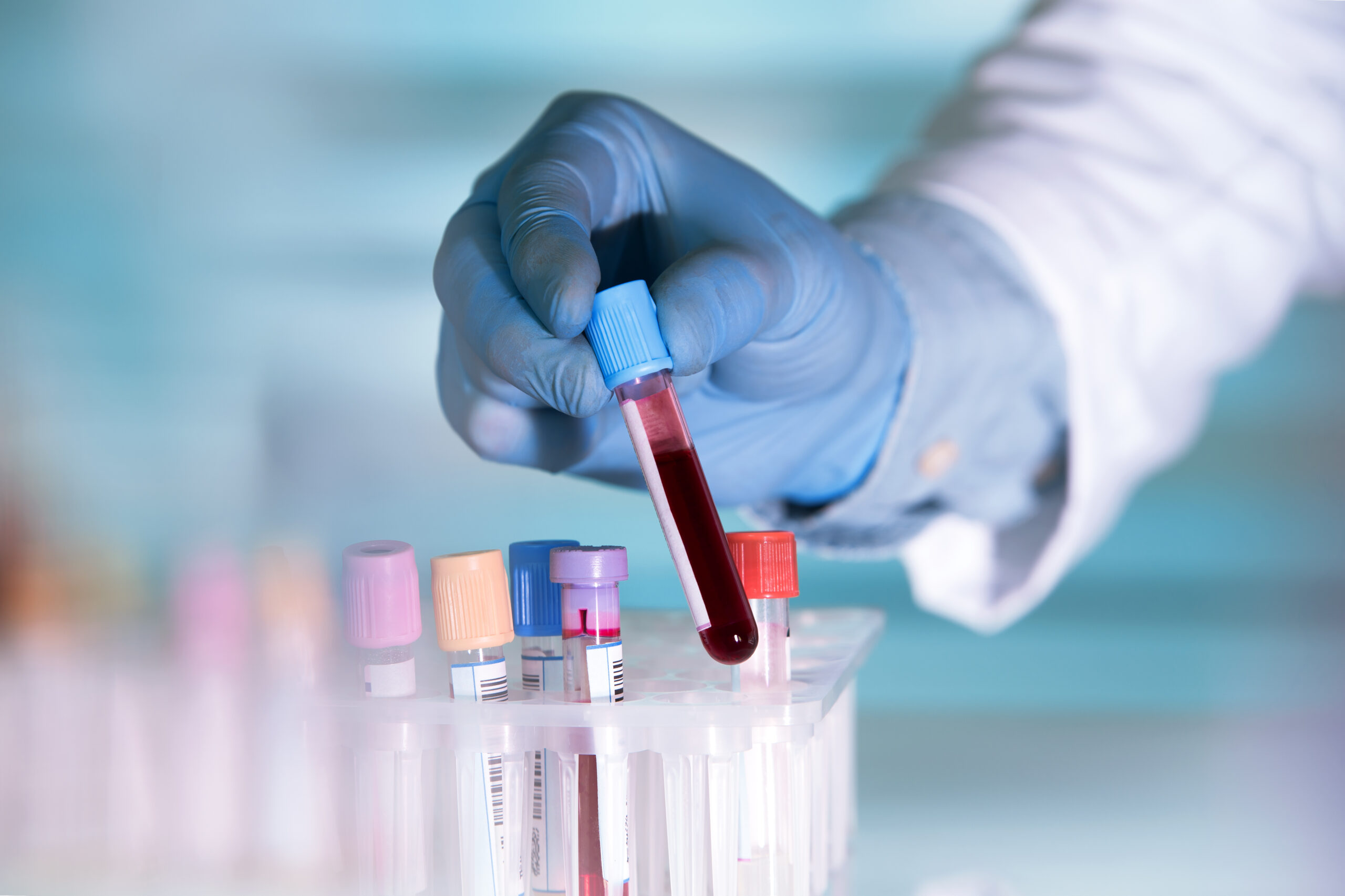Blood work, a common term for clinical blood tests, is a vital tool in modern healthcare. It involves analyzing a sample of blood to assess various health parameters, such as blood cell counts, cholesterol levels, and liver function. Regular blood work is crucial because it helps in early detection of diseases, monitoring of chronic conditions, and evaluation of the effectiveness of ongoing treatments. By providing a snapshot of one’s current health, blood tests can reveal hidden health issues, track changes over time, and guide decisions about lifestyle and medical interventions. The importance of regular blood work lies in its proactive approach to health management, allowing individuals and healthcare providers to stay ahead of potential health problems.
Common Blood Panels to Have Done
There are several key blood panels that are invaluable for regular health monitoring.
- The Complete Blood Count (CBC) is fundamental, as it evaluates red and white blood cells and platelets, indicating conditions like anemia or infections.
- A Lipid Panel, crucial for assessing cardiovascular risk, measures cholesterol and triglyceride levels and is recommended at least once every five years for adults.
- Basic metabolic panel. This panel is used to assess for abnormalities in kidney and pancreas function and usually measures the following eight compounds: calcium, glucose, sodium, potassium, bicarbonate, chloride, blood urea nitrogen (BUN), creatinine.
- Vitamin D status. Serum 25-hydroxyvitamin D is measured to assess vitamin D status. Vitamin D is essential for bone health and is currently one of the most prevalent nutrient deficiencies in the United States.
- Iron status. Serum ferritin along with the CBC are used to determine iron status. Iron is an essential mineral used by red blood cells to deliver oxygen throughout the body and is currently one of the most prevalent nutrient deficiencies in the United States, particularly among women and vegetarians.
The frequency of these tests may vary based on individual health conditions, age, and risk factors, making it essential to follow personalized recommendations from healthcare providers.
Where to Get Blood Work Ordered
Blood work can be ordered by a healthcare provider such as a primary care physician, a specialist, or in some cases, through direct-to-consumer lab testing services. When ordered by a doctor, the tests are usually tailored to the individual’s specific health concerns or risk factors. Many medical facilities and hospitals have onsite laboratories for blood drawing and testing. For convenience, independent laboratories and diagnostic centers also offer blood work services, often with the option of scheduling appointments online. In recent years, at-home blood test kits have gained popularity, allowing individuals to collect their blood samples and send them to a lab for analysis. Regardless of the method, it’s crucial to ensure that the facility or service is accredited and reputable.
What to Expect during the Procedure
A blood test, typically conducted by a nurse or technician, can be done in a lab or a doctor’s office and takes just a few minutes. The steps involved in a blood test are:
- Cleaning the area on your arm where the blood will be drawn.
- Applying a rubber band around your upper arm to make the veins more visible and asking you to clench your fist.
- Gently inserting a needle, attached to a tube, into a vein to collect blood.
- Removing the needle and the rubber band once enough blood has been collected.
- Placing a bandage or a piece of clean cotton with medical tape over the site where the blood was drawn.
While routine blood tests are generally safe, there are minimal risks involved, such as slight discomfort or pain when the needle is inserted, fainting due to blood loss, or accidental puncture of the vein.
How Often Should You Have Blood Work Done?
The frequency of physical examinations can vary based on age. Many clinical organizations agree those aged 18 to 39 should get routine blood work at least once every 5 years, ages 40 to 49 every 2 to 3 years, and ages 50+ should have blood work done once every 1 to 2 years.
How to Interpret Results
All lab reports should have certain components that are essential to interpreting the results.
- Reference range: Each lab has its own reference range for each test. This is typically a range of values for a given test commonly considered to be healthy or normal. Your lab report will usually list this reference range alongside your result, allowing you to see where your result fits within this range.
- Quantitative test result: This is the result for your specific lab test.
- Indicators of abnormal results: Lab reports typically mark results that fall outside the reference range as abnormal. You might see an ‘H’ for high results, an ‘L’ for low, or ‘WNL’ for results that are “within normal limits”. Highly abnormal results might be marked with an asterisk and additional comments, and in such cases, your doctor will likely contact you.
If you are struggling to make sense of your results, it is a good idea to share your report with your primary care physician. They can accurately interpret your results in the context of your overall health. They can explain the findings and answer any questions you might have.
Personal Experience
Like so many others, I am guilty of ignoring my health, particularly when I was going through school. At such a young age it was hard to see the value of monitoring my health. That all changed when I turned thirty. I remembered feeling like the stakes wee suddenly much higher, even though they weren’t. Something about entering a new decade of my life made me care more about my own health. I found a primary care physician (which I previously did not have!) and made an appointment for a physical and to order blood work. At the appointment, my doctor was very kind.
“What brings you in today?” He asked.
“Well, I recently turned thirty. I just want to make sure there was nothing wrong with me.” I replied.
Without looking up from his notepad, the doctor half laughed “Yeah, that’s usually when they start coming in!”
Since then I have done my best to have blood work done on a regular basis. The way I see it, the time and money required to get these tests done is worth the peace of mind in knowing I am in good health.
Conclusion
In conclusion, regular blood work is a cornerstone of preventive healthcare. It empowers individuals with crucial information about their health, aids in the early detection of diseases, and helps in managing ongoing health conditions. By understanding the significance of different blood panels and maintaining a schedule for regular testing, individuals can take an active role in their health management. It’s important to consult with healthcare professionals to determine the most appropriate tests and frequency based on individual health needs. Regular blood work, combined with a healthy lifestyle and regular medical check-ups, is key to maintaining optimal health and well-being.
References
- Cui A, Xiao P, Ma Y, et al. Prevalence, trend, and predictor analyses of vitamin D deficiency in the US population, 2001-2018. Front Nutr. 2022;9:965376. Published 2022 Oct 3. doi:10.3389/fnut.2022.965376
- Daru J, Colman K, Stanworth SJ, De La Salle B, Wood EM, Pasricha SR. Serum ferritin as an indicator of iron status: what do we need to know?. Am J Clin Nutr. 2017;106(Suppl 6):1634S-1639S. doi:10.3945/ajcn.117.155960
- Goldma, H. 5 important blood tests beyond the basics. Harvard Health Publishing. July 1, 2021. Accessed December 4, 2023. https://www.health.harvard.edu/staying-healthy/5-important-blood-tests-beyond-the-basics
- Adult Health Maintenance Guidelines. District of Columbia Department of Human Resources. Accessed December 4, 2023. https://dchr.dc.gov/sites/default/files/dc/sites/dchr/publication/attachments/Adult%20Health%20Maintenance%20Guidelines_dchr.pdf
- Blood Test. National Heart, Lung, and Blood Institute. March 24, 2022. Accessed December 4, 2023. https://www.nhlbi.nih.gov/health/blood-tests
- Second National Report on Biochemical Indicators of Diet and Nutrition in the U.S. Population. U.S. Centers for Disease Control and Prevention. March 29, 2012. Accessed December 4, 2023. https://www.cdc.gov/nutritionreport/pdf/4Page_-2nd-Nutrition-Report_508_032912.pdf
- Use of ferritin concentrations to assess iron status in individuals and populations. World Health Organization. August 9, 2023. Accessed December 4, 2023. https://www.who.int/tools/elena/interventions/ferritin-concentrations#:~:text=Ferritin%20is%20an%20iron%2Dstorage,concentrations%20could%20suggest%20iron%20overload.
- What You Need to Know About Blood Testing. MedlinePlus. Accessed December 4, 2023. https://medlineplus.gov/lab-tests/what-you-need-to-know-about-blood-testing/











